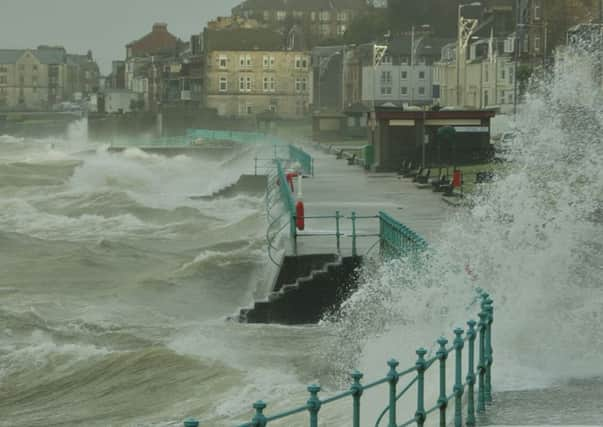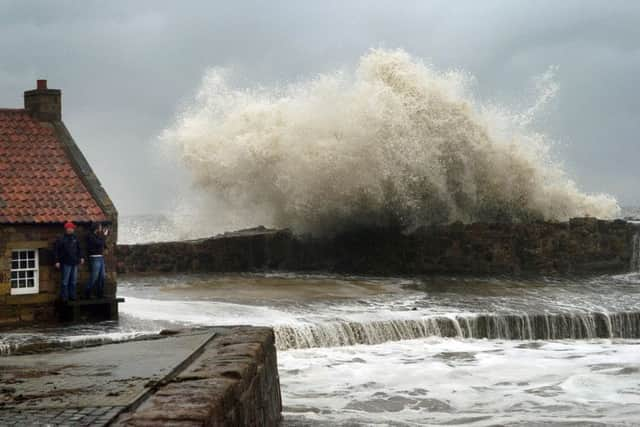What are the worst storms to hit Scotland in recent times?


HURRICANE BAWBAG 2011
The Free University of Berlin - which names low-pressure storms over the north of Europe - called this weather system Friedhelm. Scotland called it Hurricane Bawbag.
Between December 8 and December 9, Bawbag smoved rapidly in from the Atlantic with a red weather warning issued for Central Scotland ahead of its arrival.


Advertisement
Hide AdAdvertisement
Hide AdExams were postponed at a number of universities, including Edinburgh and Glasgow, and most schools were closed by lunchtime. The Forth, Tay, Erskine and Skye Bridges were all shut due to strengthening winds.
Christmas lights were blown down in Aberdeen and a wind turbine burst into flames in Ayrshire. A top gust speed of 165mph was recorded in The Cairngorms with sustained speeds of 105mph noted. Bawbag was formed when a cyclone on the polar front to the west of Scotland hit warmer air coming up from the south.
Despite the severity of the storm, no deaths were recorded.
BOXING DAY 1998
Thousands of home were left without power over the festive season as power lines faltered under winds of 110mph.
The storm, named ‘Stephen’ by forecasters, developed quickly in the Atlantic on Christmas Day before it tracked rapidly northeast on the morning of the 26th.
As it hit Ireland, forecasters recorded the most rapid pressure drop of all time before the storm headed for Scotland.
Winds hit around 110mph at Prestwick Airport with speeds of 93mph recorded in Glasgow where a large part of St Stephen’s Church’s spire in Bath Street came crashing down.
During the storm, over two million people across Scotland and the north of England were left without power - some for many weeks,
BURNS’ DAY STORM 1990
The Burns’ Day Storm started in the Atlantic, crossed southern Scotland and went on to kill 47 people in Ireland, England, Wales and Northern Europe.
Advertisement
Hide AdAdvertisement
Hide AdWhile it may not be remembered in the same way as the Great Storm of 1987, the wind speeds were comparable or higher at times.
Starting on January 23rd, the storm brewed in the Atlantic with the formation of a depression and an associated cold front. It rapidly moved towards Ireland where the depression deepened before it arrived over Ayrshire on the 25th. The storm then moved south, where the bulk of the damage was caused.
Around 3 million trees were destroyed with the cost to the insurance industry said to be £3.37bn.
HURRICANE LOW Q 1968
Central Scotland was savaged by Hurricane Low Q in January 1968 with this storm immediately claiming 20 lives. Another 30 workmen dying attempting to clear the devastation
At its peak, winds up to 140mph battered across Glasgow, affecting Clydeside districts such as Partick and Govan. The trail of damage suggested that a tornado had been at work, shaking tenement buildings to the core and pulling others to the ground as it passed.
The final repair bill was estimated at £30m with 300 homes destroyed and up to 2,000 people left homeless.
Tarpaulin roofs and fallen chimney stacks were familiar sights long after the storm had passed.
The storm, often described as Scotland’s worst natural disaster, is said to have originated from a low pressure front in Bermuda.
NORTH SEA FLOOD 1953
Advertisement
Hide AdAdvertisement
Hide AdOne of the most devastating natural disasters ever recorded in the United Kingdom with 900 miles of coastline damaged. More than 30,000 people were evacuated from their homes, with 24,000 seriously damaged. The Netherlands also sorely suffered.
In Scotland, the surge crossed between the Orkney and Shetland Isles,causing widespread flooding and destruction of coastal defence.
The North East fishing village of Crovie, which sits on the Moray Firth coast, was abandoned as many of its buildings washed into the sea.
The ferry MV Princess Victoria, travelling between Scotland and Northern Ireland, was lost with 133 people drowned. High numbers of fisherman also lost their lives.
In the Netherlands, the loss of life caused by the tidal surges was enormous with 1,835 people dead.